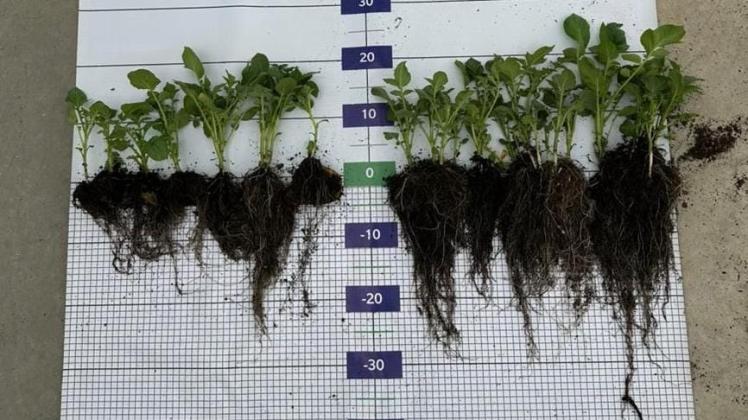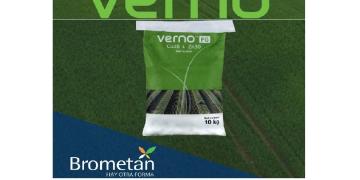Technical Information: Building roots, the starting point for obtaining desirable yields in potato cultivation
Root development is key to good establishment and efficient use of resources.

An increase in the average actual potato yield has been observed in all producing areas. This is explained by factors such as seed quality, improved agricultural machinery, more efficient phytosanitary management, and, especially, crop fertilization. While all these improvements have resulted in higher yields, it should be noted that current yields are still far from the potential achievable yields, limited by factors that can be modified by the producer, such as irrigation management, plot selection, seed physiological age, and nutrition.
Considering this last point, and knowing that radiation interception is one of the main factors that determines yield, it’s crucial to focus on the stage of the crop where it all begins: planting. If the crop’s emergence and establishment speed is increased at this stage, thus generating earlier furrow closure, the intercepted radiation will be greater, and, by default, there will be improvements in the yield obtained at the end of the cycle.
Root development is key to good establishment and efficient use of resources. In this context, it is important to highlight that potatoes have a limited root system. The greatest root volume is found primarily in the top 20 cm of soil, which limits soil exploration. Given their high nutritional requirements, high doses of base fertilizer are often used at the time of planting.
Zinc is a micronutrient that is still under-represented. Its availability has decreased in recent decades due to the intensification of agriculture, falling soil organic matter levels, and a lack of replenishment. Zinc is involved in processes such as cell division, directly impacting root development. Therefore, its application is essential in the early stages, as it allows us to develop roots of sufficient quantity, quality, and length, as well as secondary roots and root hairs, which expand the surface area in contact with the soil, improving water and nutrient absorption, in line with their efficient use.
Zinc availability must be guaranteed close to the root due to its low mobility and the interaction that exists at high levels of available P, as generated in typical crop management. In addition to the aforementioned importance of zinc, its adequate availability in the root zone during plant growth allows for the control of the exudation of carbon-rich compounds, and consequently drastically reduces root infection by soil-borne pathogens.
Fertilizing potato crops with zinc has responses ranging from 5 to 24%, depending on soil zinc levels, available phosphorus levels, OM content, among other factors. In addition, in sites that already suffer from zinc deficiency, fertilization with this micronutrient can increase the percentage of dry matter and starch in tubers.
Trials conducted in recent years at INTA’s Balcarce Integrated Unit show an average response, in fresh tuber yield, of 7.9 tons per hectare for zinc applications.
Like other nutrients, zinc can be obtained from a variety of sources, the most common being oxides and salts. However, chelated formulations are currently gaining ground. A chelate is an organic molecule that coats zinc, neutralizing its charge and preventing unwanted reactions with the environment, whether the soil or the mixture in the application tank. This allows us to apply the nutrient to the soil without precipitation, making it more easily assimilated by the plant and allowing for the addition of a large dose without causing phytotoxicity.
Use of growth hormones.
Hormones play an important role in plants, regulating their growth, development, and reproduction. Therefore, Stoller proposes combining auxins (responsible for generating cell division), cytokinins (crucial in tissue differentiation), and gibberellins (promoting cell expansion). Although they are naturally produced by the plant, their imbalance is common when faced with any stress, and their exogenous application ensures proper hormonal balance, promoting normal crop development.
It’s clear that for a good start, potatoes require a combination of two factors: growth-promoting hormones and a readily available source of chelated zinc. Therefore, Stoller recommends using Radus, a liquid fertilizer formulated with growth hormones and chelated zinc, for application at the bottom of the furrow during planting.
According to trials conducted in past campaigns, combining diverse environments, varieties, and planting dates, Stoller confirms that applying Radus brings benefits that impact yields, such as:
1. Reduction of the sowing-emergence period: The crop begins to grow and develop earlier, which not only promotes the accumulation of reserves for the rest of the cycle, but also positively impacts intercepted radiation and, why not, weed control by closing the furrow earlier.
2. Greater root development: Greater root volume means improved soil exploration where the crop is planted, which optimizes the absorption of water and nutrients in solution. It also improves tolerance and recovery from any environmental stress.
Fuente: Stoller–Corteva




